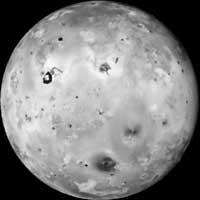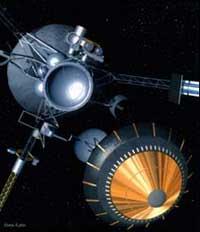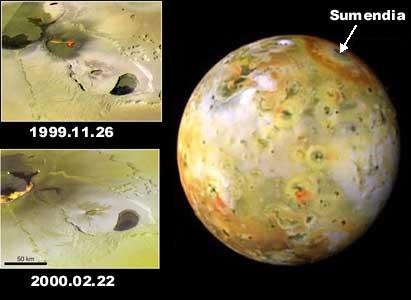The last hour of the probe Galileo
2002/02/03 Mendiburu, Joana - Elhuyar Zientziaren Komunikazioa
Galileo is a probe that revolves around the planet Jupiter. Dismissed in 1989, it has been in the orbit of the giant planet for five years. NASA has pointed out that the tasks they have prepared for the coming months will be the last they will perform.
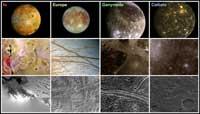
NASA launched the Galileo probe on 18 October 1989 to investigate Jupiter and its largest satellite, Io, Europe, Ganymede and Calisto. He made a long journey and approached the Jupiter system in December 1995. He entered the orbit around the planet and began to collect photographs and data, including the great stain of Jupiter.
But the reason Galileo referred is not a new discovery thanks to him. This time, NASA astronomers have announced the withdrawal of Galileo.
This new project will cost 9 million dollars and will end in August 2003. This month the probe will be sent into Jupiter's atmosphere and upon reaching it disintegrates like a fireball. But before disappearing forever you will have to observe several moons of Jupiter.
Abundant harvest of Galileo
Astronomers are sad at the end of Galileo. However, in view of the work that Galileo has done in the last six years, they have reason for satisfaction. Galileo has spent three times longer than expected in orbit, although Jupiter's radiation has been more intense than expected.
Galileo has made 33 turns to Jupiter, has been seven times near Io and, in total, 27 times around Europe, Ganymede and Callisto. Periodically, those responsible for the mission took advantage of the gravity of the satellites to change the route of the boat to the next destination.
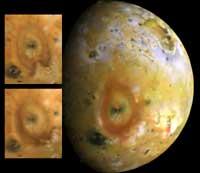
NASA officials have been very satisfied and proud that Galileo has fulfilled its role very well during the years it has spent in orbit. The probe has collected and sent a lot of useful information for astronomers. He has issued about 14,000 photographs and thanks to Galileo, scientists have discovered that under the ice sheet of Europe there is a liquid ocean of salt water. In addition, evidence of volcanic activity on the moon Io was discovered through Galileo. In addition, in December 2000, he joined the Cassini spacecraft, which was headed to Saturn, observing between the two the Jobian system and its magnetic environment.
Difficult but necessary decision
The National Research Council insists that Galileo's benefit has been unbeatable, but the National Research Council affirms that its operation will worsen and recommends the destruction of the probe. Apparently, three are the reasons that have motivated this decision.
First, experts worry that the probe has not been sterilized before takeoff. At the first blow, it seems a surprising idea, but the truth is that it is more important than it seems. It seems that under the solid ice sheet of the satellite Europe there is a liquid sea, and NASA astronomers want to find out if it is alive on this satellite. For this it is necessary to keep the liquid in its original state. Apparently, the accidental impact of probes on Luna Europa can cause biological contamination on this satellite, which could cause another NASA project to crumble.
On the other hand, Galileo has endured more than expected and gradually the fuel needed to drive the probe and put the probe antenna to the Earth is exhausted. Therefore, it would soon be useless to keep Galileo.
Finally, to prevent Galileo from colliding with the Earth, Nasa has preferred to destroy it under control and definitively dismiss Galileo.
Last tasks
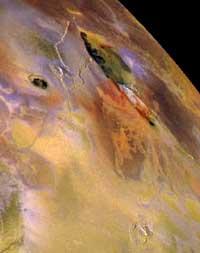
But before retiring, NASA astronomers will lead you to make a new visit to the moon volcanoes to take the latest photos. The volcanoes of Luna Io were discovered in 1979, and since then they have only surprised. Galileo moves closer than ever to Io and astronomers hope they can detect data that could not be seen until now. With this last visit they hope to see how some volcanoes have changed in recent years. In the words of Eilene Theilig, from the Jet Propulson laboratory of Anna, responsible for the Galileo project, "Galileo is at the last and, therefore, this last visit is especially exciting".
" Orbital missions like Galileo allow you to pass several times through a place of interest for a certain time. This is an important advantage for researching Io, which changes a lot."
In November 2002, on the verge of extinction, Amaltea approached Jupiter a lot and passed about 500 kilometers from the small satellite inside Jupiter. In this case, it will analyze the mass and density of the Moon, which, according to previous studies, is ten times smaller than Io. Likewise, astromas expect Galileo to provide the key to explaining the violent storms of Jupiter and the volcanoes of Io before their destruction.
Therefore, even if it has a destruction date, Galileo must continue to work to send precious information until the last moment.
Published in 7K.

Gai honi buruzko eduki gehiago
Elhuyarrek garatutako teknologia



